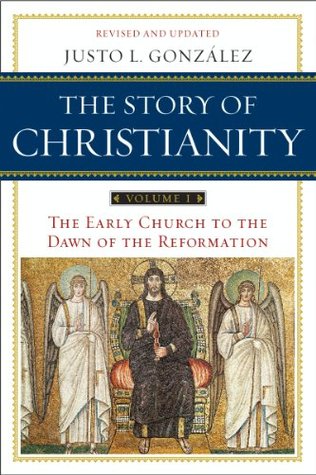More on this book
Community
Kindle Notes & Highlights
Read between
August 11 - October 9, 2017
Fear was everywhere:
It was a time of fear, and fear demanded its victims.
The Byzantine Empire, in spite of its high-sounding name, was little more than the city of Constantinople and its surroundings.
Constantinople was friendless, and Constantine XI, who was then emperor, had no option but to continue his plans of union with Rome, and hope that somehow Western Europe would come to his help.
On April 7, 1453, Muhammad II laid siege to the city.
Both were sincere men who sought to reform the church. But whereas Celestine had tried to achieve that reformation through Franciscan simplicity, Boniface would seek the same end through power politics.
His resignation was a severe blow, and many refused to accept it,
the early years of Boniface’s reign were eminently successful.
in 1296 issued the bull Clericis laicos, forbidding the clergy to make any kind of contribution to the secular power.
finally both kings had to accept Boniface’s mediation
Boniface’s last weapon was the one his predecessors had used against other recalcitrant rulers, excommunication.
Nogaret’s purpose was to force Boniface to abdicate.
Boniface was no longer able to inspire the respect he had commanded earlier.
the cardinals hastened to elect Boccasini as the next pope,
The election of the next pope was a difficult matter, for each party insisted on one of its members being elected.
Although the citizenry of Rome insisted on his establishing residence in the city, Philip kept him occupied in France, and therefore under his thumb.
The most shameful event of this weak papacy, however, was the arrest and trial of the Templars.
But the accused remained in prison, and the pope did nothing to free them.
Instead of trying the Templars for their supposed crimes, the order would be abolished by administrative decision of the pope, and the property it held would be transferred to another military order.
For nearly seventy years, while still claiming to be bishops of Rome, the popes would generally remain in Avignon.
their willingness to serve as tools of French policy.
With the help of the French, he sought to assert the power of the papacy in Italy, which was therefore involved in constant wars.
his policies alienated England and its main ally, the Holy Roman Empire—which at that time was centered in Germany.
the court at Avignon rivaled those of great secular lords in its pomp and luxury.
He reformed the court at Avignon,
she remained firm in her inclination, refusing to consider the prospect of marriage.
This was a very flexible organization whose members continued living at home, but devoted themselves to a life of penance and contemplation.
But then she woke up, declared that she had had a vision, and set out on a campaign to have the papacy return to Rome.
in any case on January 17, 1377, amid general rejoicing, Gregory entered Rome.
the long period of the popes’ residence in Avignon had disastrous consequences for the life of the church.
nationalism was soon linked with resentment toward the papacy.
the popes had a vested interest in frequent and unfilled vacancies.
The evils of simony, pluralism, and absenteeism, were compounded by another practice for which many popes set the example: nepotism—the naming of relatives to positions of power.
there were many who were clamoring for a reformation of the church.
There were grounds for such fears, since the French cardinals vastly outnumbered the Italians, and several of them had indicated that they preferred Avignon to Rome.
they chose the archbishop of Bari, an Italian, who took the name of Urban VI.
In his zeal to put an end to absenteeism, he declared that those bishops who formed part of his court, and therefore were not in their dioceses, were traitors to Christ and guilty of perjury.
he decided to appoint a vast number of Italian cardinals,
while claiming that he wished to reform the church, he continued appointing relatives to positions of importance,
An ever-increasing number of cardinals joined the opposition. First the French, and then many of the Italians, fled from Rome and gathered in Anagni.
Urban responded by appointing twenty-six new cardinals from among his staunchest supporters.
the same cardinals—except one—who had elected Urban, and who for some time had served him, elected a new pope
now for the first time there were two popes elected by the same cardinals.
all Western Christendom was forced to take sides.
As soon as he was elected, Clement took arms against Urban, and attacked the city of Rome.
there were now two popes, one in Rome and one in Avignon,
France opted for the pope in Avignon, and in this was followed by Scotland,
England took the opposite tack, for the papacy in Avignon was a threat to its interests.
this new Boniface left aside Urban’s program of reform, and his papacy gave new impetus to the practice of simony.
In France itself, a national council withdrew its obedience from Benedict. French troops then laid siege to Avignon.


